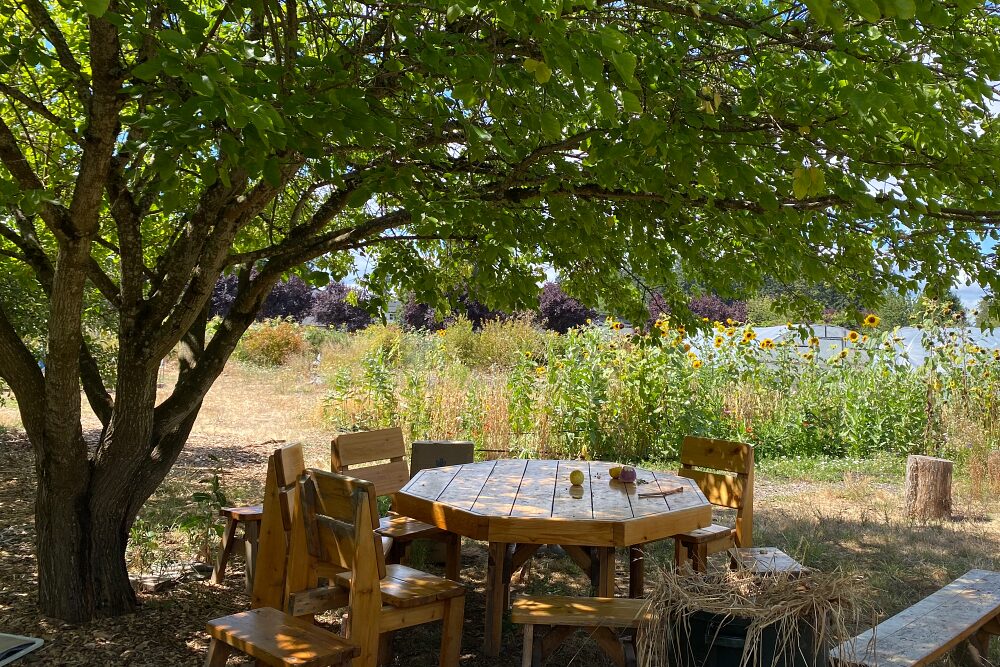After working as an editor for a while, I started gardening to relieve stress and soon noticed how much these two activities resemble each other. A gardener loves their garden unconditionally, spending countless hours tending to it, protecting it from harsh weather, and nurturing it to grow. As an editor, I am very dedicated to the books I work on. I care for their content and appearance, persevere through low pay and heavy workloads, and continually strive to improve my craft. Just as with a garden, people only see the final product of a book, not the hard work behind it. This makes both roles occasionally lonely but deeply fulfilling.
A gardener carefully curates their garden, deciding which plants to grow, where, and how to tend and prune them. This parallels the editorial process—acquiring, developing, and refining manuscripts. The aim is the same: to create the best possible outcome, whether it’s a flourishing garden or a polished book.
Just as a gardener needs to focus on both the overall landscape and the individual plants, an editor must balance seeing the bigger picture of a book while diving into its details. Sometimes, gardeners focus too much on a few plants and lose sight of the overall ecosystem, or they create a beautiful front yard while neglecting the hidden corners. Similarly, I sometimes find myself too deep in a manuscript, forgetting to step back and see how it fits into the broader landscape. Gardening reminds me to do both—to think strategically about where a book fits while paying close attention to its messages, coherence, and details.
Gardeners also serve as ecosystem coordinators, ensuring that the various elements of the garden—plants, pollinators, and wildlife—are balanced. In much the same way, editors act as connectors within the publishing ecosystem. We work with authors, publishers, and freelancers, smoothing out communication and ensuring everyone is on the same page. We also help connect books with readers, advocating for the work we nurture.
Experimentation is a key part of gardening. A gardener tries different plants, testing which ones will thrive in their space. Similarly, as an editor, I have explored various genres—literature, economics, young adult fiction, and more—before finding my strength in nonfiction for young adults and adults. Not every editor finds their niche right away, but like in gardening, experimentation leads to growth.
When it comes to the conceptual level of editing, I am highly focused. Just as a gardener carefully designs their space, I am meticulous about shaping the concept of a manuscript. The concept drives the narrative, engages readers, and enhances the book’s impact. I work closely with authors to ensure the book’s identity and meaning are clear and compelling.
I also consider the potential pitfalls in a manuscript. Just as a gardener keeps an eye out for pests, I remain mindful of controversial details or unintended microaggressions that might harm the book’s reception. My goal is to help the author navigate these areas without sacrificing the integrity of their work.
At the pruning stage, I intervene minimally, respecting the natural shape of each plant while ensuring the garden’s overall harmony. Unless the design demands otherwise, I make only minor, careful cuts to preserve the plant’s essence. Similarly, at the copyediting level, I aim to retain the author’s voice and style, making only essential adjustments. If certain grammatical choices enhance the manuscript’s character, I leave them untouched. Both in gardening and editing, I work thoughtfully, ensuring the final product stays true to its original vision while allowing it to thrive.
Just as no gardener plans to see their garden wither after one season, I approach editing as the beginning of a long-term relationship. I don’t just focus on a single project; I aim to build lasting collaborations with authors, supporting them in their writing careers for the long haul. Gardening and editing share a common thread—both are acts of nurturing, patience, and growth.

